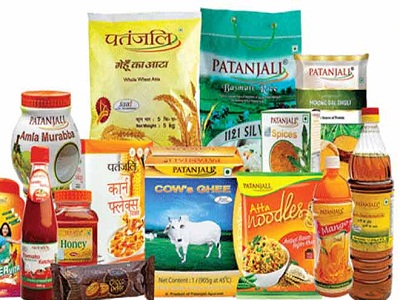Patanjali products have reached people, but they are not able to grab the products from the nearby shops due to the lack of a proper distribution network across the whole country. People claim that the grocery items such as atta, sugar, and pulses that are heavily advertised are usually out of stock.
The distribution muscle of Patanjali as created a huge gap between demand and supply, admits the MD of Patanjali Ayurved, Acharya Balkrishna. He was lately in the news for possessing 94 percent stake in the organization. He stated that they are working on launching 250 mega stores in the tier 1 and tier 2 cities.
Apart from this, Patanjali has modern trade partnerships with Big Bazaar, Hypercity, Reliance Retail, D-Mart, Star Bazaar, More, Spencer Retail, and Apollo Pharmacy. This way, the brand covers more than 4,500 stores all over the country. Moreover, the Patanjali products can be obtained from e-commerce websites such as Big Basket, Grofers, and Amazon.
He added that Patanjali has surpassed Colgate, Nestle and HUL in the FMCG segment and now it needs some time to bridge the existing gap between demand and supply.
As per Nielson reports, the available of a product is the largest driver of sales in the FMCG segment accounting to 33 percent. Given that the headquarters of Patanjali is at Hardiwar, there are no small kirana shops in the north.
When it comes to retailers, they claim that they get enough customer queries for the brand, but they don’t retain stocks. The margin that they receive is 5 to 6 percent and 10 percent on a few products. However, the store maintenance requires 15 percent. On the other hand, HUL products give a cumulative 50 percent margin on the whole range.
The other issue is that distributors are not delivering stock of Patanjali products in the locality. In a specific locality, they stock products from Colgate, HUL, Nestle and Dabur. No one had a Patanjali product in their stores.
Those who are willing to stock these products despite the low margins, they were struggling to look for distributors who are willing to sell the same.
The distributors suggest that the margins are low. The whole FMCG category has low margins, but there is a high demand and a shortage of the products.
Patanjali knows the weak traditional trade format and it is working to set things right in one year. Acharya Balkrishna claims that things will be on track in three months.
But, analysts suggest that 90 percent of the country purchase FMCG from kirana stores and this is a bottleneck for Patanjali. It is predicted that it will take them three years to overcome the same.
The growth rate will eventually slow down and the pressure to expand will increase. In such a situation, Patanjali will invest heavily in terms of distribution.

